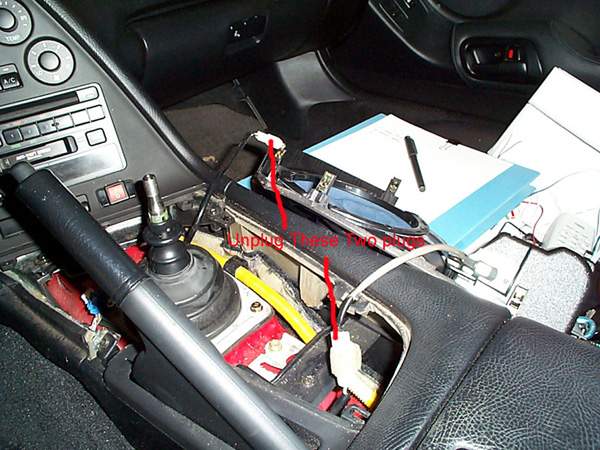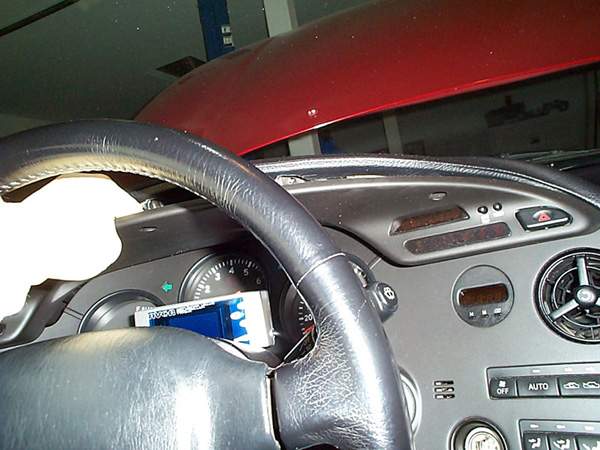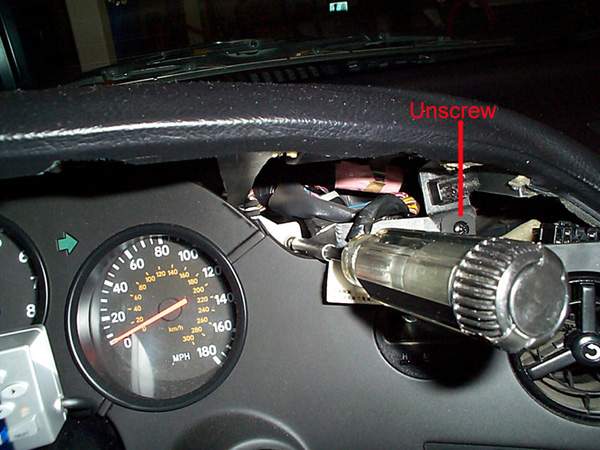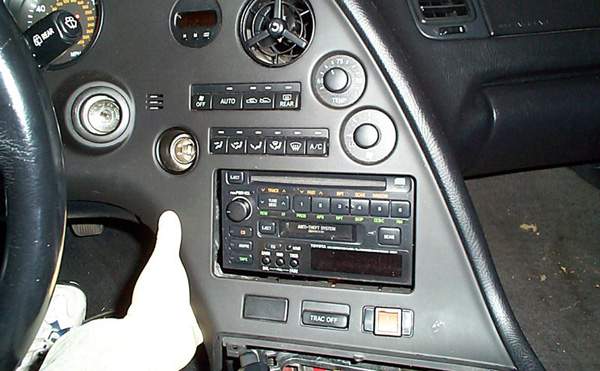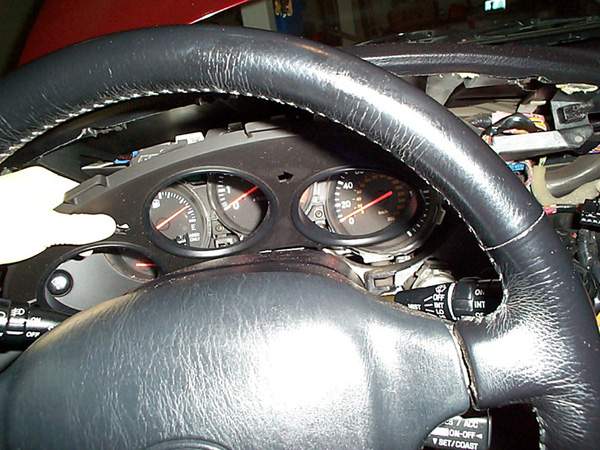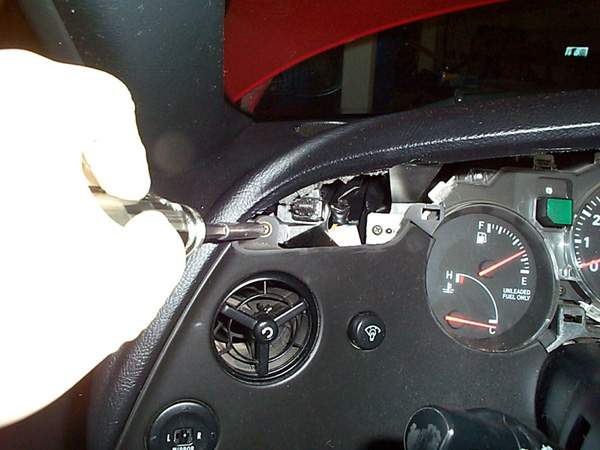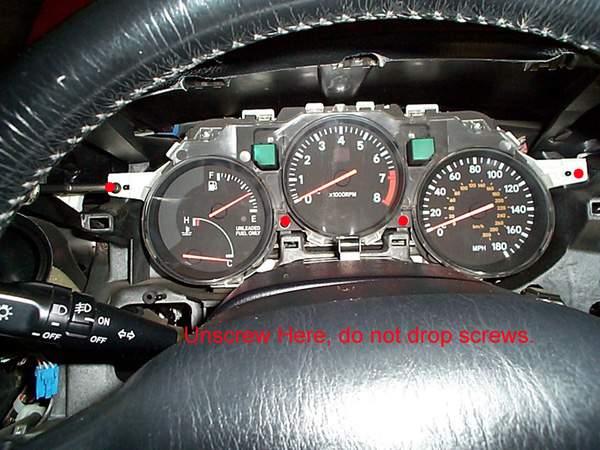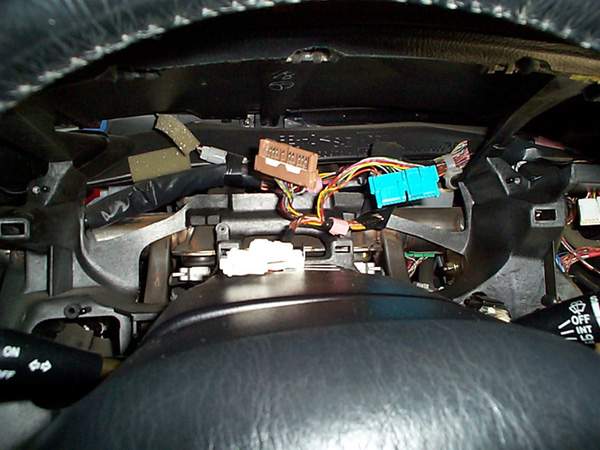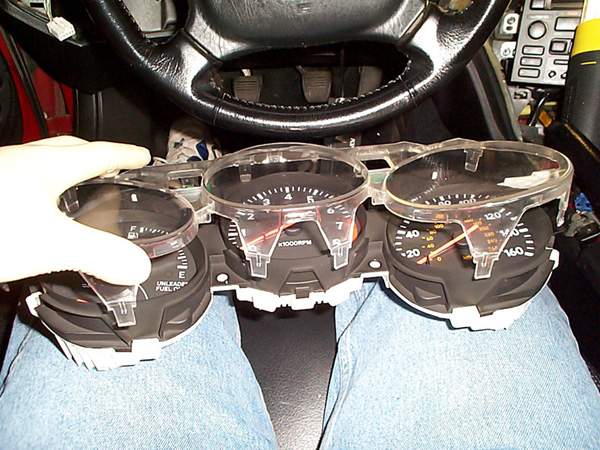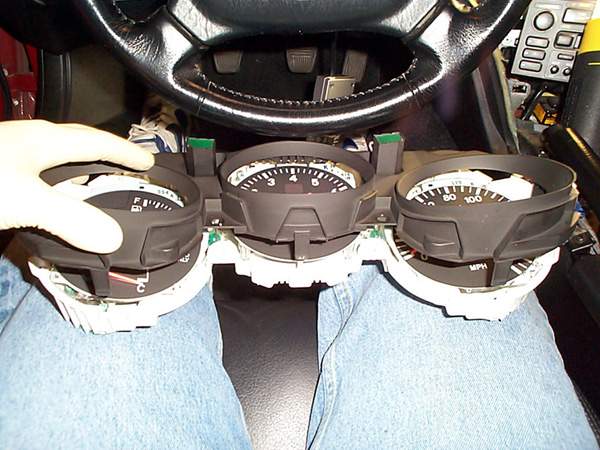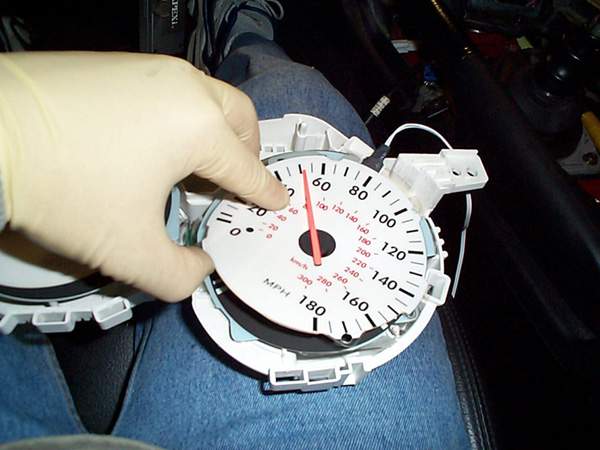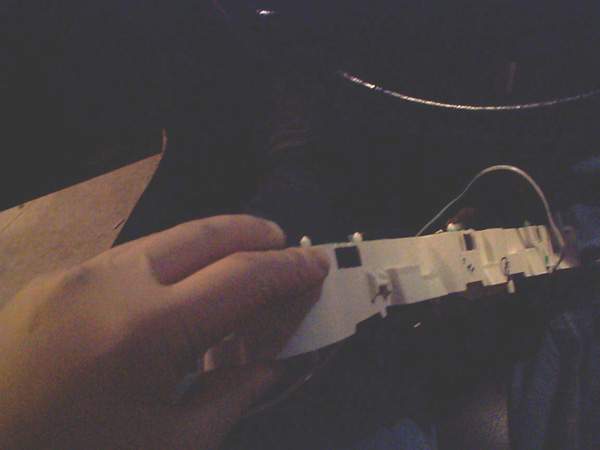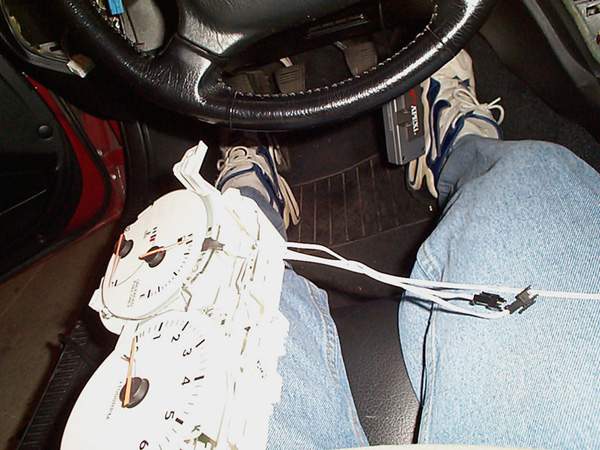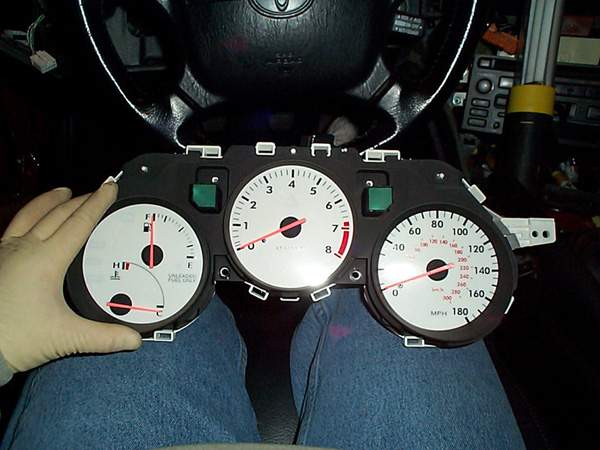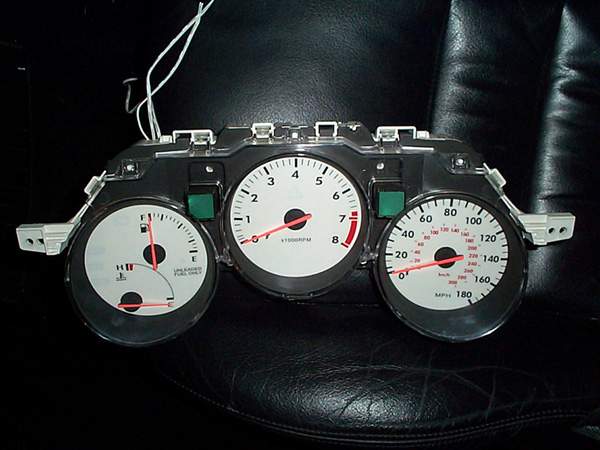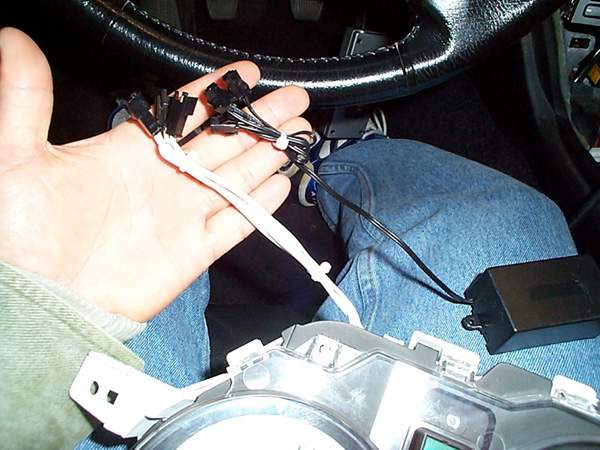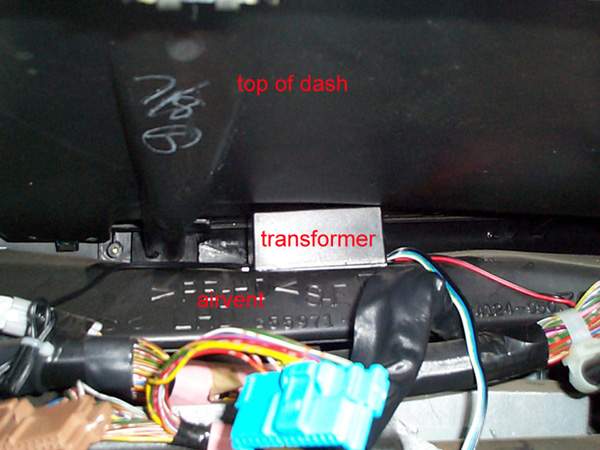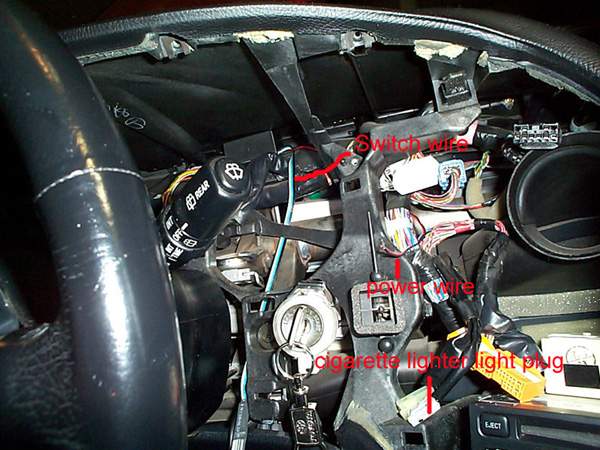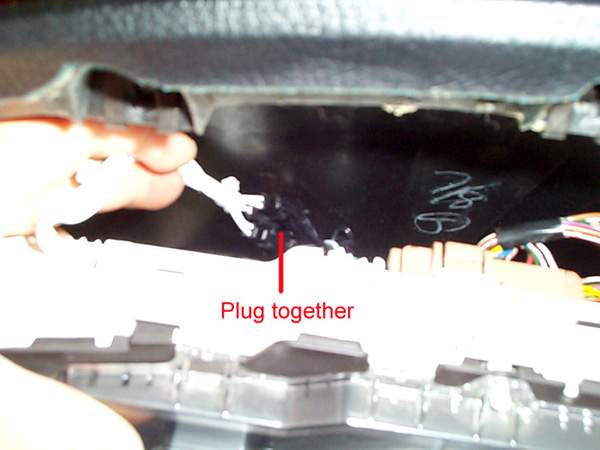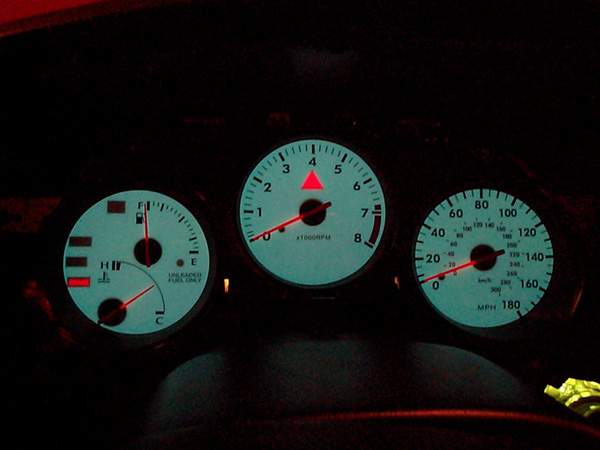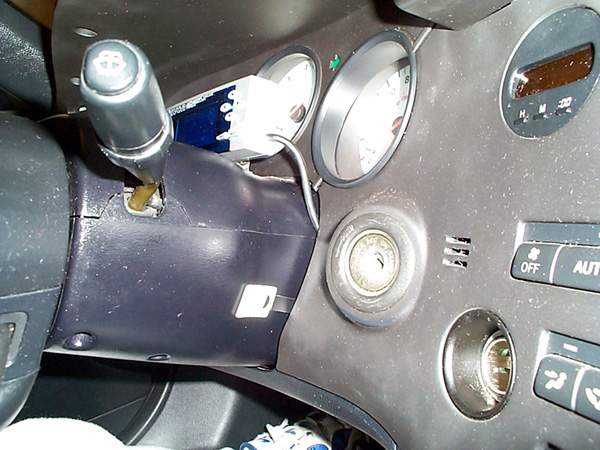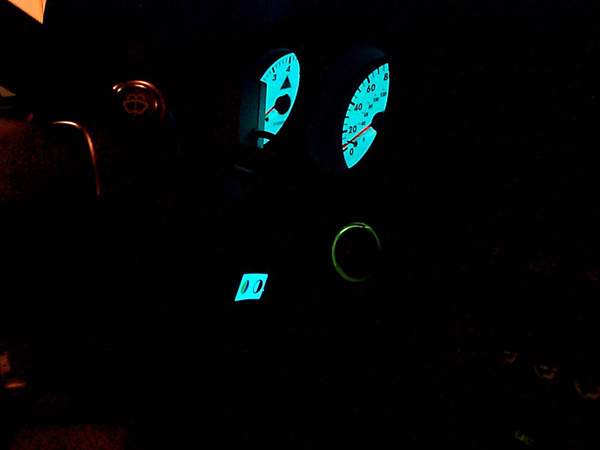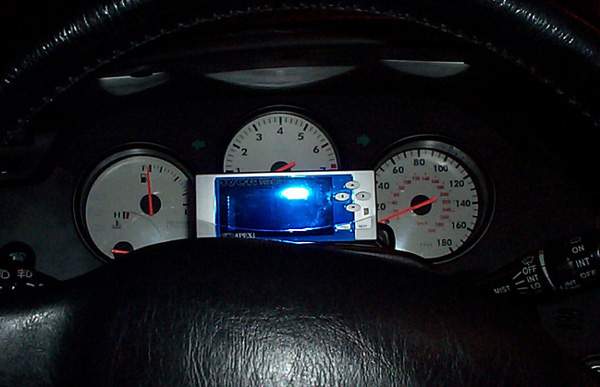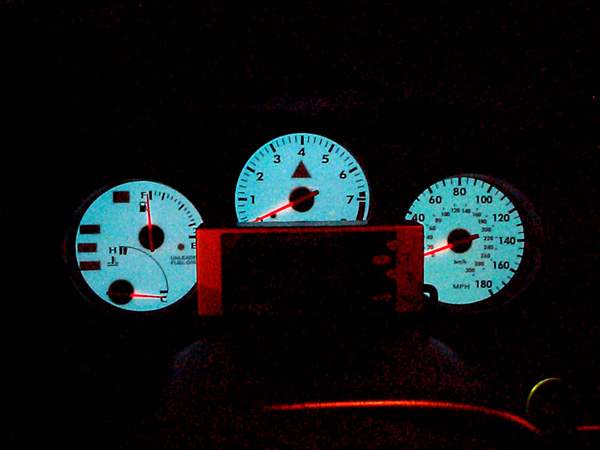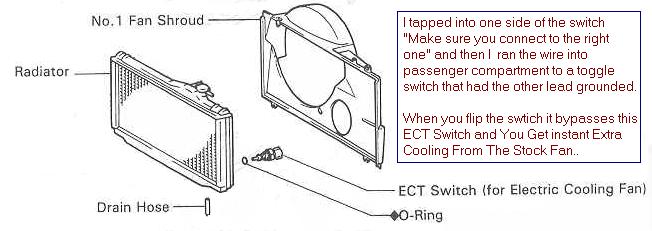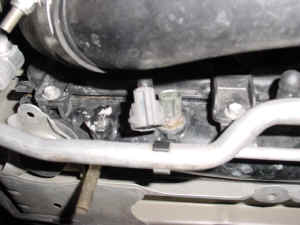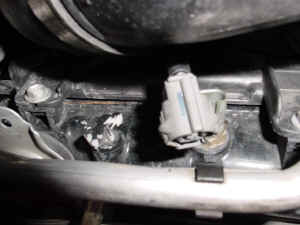Ettc mod
Electronic-True
Twin Conversion
(E-TTC)By:
Jeff Lee
This page is currently Under
Development and some illustrations may not be available at this time.
Please check back at a later time and sorry for the inconvenience.
- *****IMPORTANT NOTICE*****
- This mod may put
additional stress on your pressure tank, which is used to “lock on” your
actuators during 1st->1st+2nd transition. The tank will be mainly
used in this mod to keep the Intake Air Control Valve (IACV) and Exhaust
Gas Control Valve (EGCV) open during TTC mode. So make sure your
pressure tank is working properly before performing this mod. If
you notice your turbo(s) not properly spooling up after performing this
mod, you may want to replace your pressure tank. (About $35) Perform
this mod at your own risk and make sure that you are knowledgeable with
simple electrical wiring/splicing/soldering and that you have an complete
understanding with the Supra’s vacuum/turbo system routing. So pretty
much: Make sure you know exactly what you are doing!
What this Mod does:
This mod (when done properly)
will enable you to electronically switch, using a simple rocker switch,
from the Supra’s conventional sequential turbo setup to TTC without the
use of check valves nor having to tamper with the hoses. Many have
often complained about the lag associated with TTC (especially on autos),
this mod will eliminate such problems by letting YOU the driver choose
which turbo mode (Seq/TTC) you want your car to run in with a flip of a
switch!
The Concept:
Originally,
the IACV and EGCV actuators are only to be opened by the ECU via VSV’s
at around 4500rpm, thus switching to car to twin turbo mode. The
original “TTC” method works when the IACV and EGCV actuators are forced
open by pressure being trapped inside the actuator itself (pressurized
from the pressure tank), either by using check valves or wiring the actuators
shut. With
these two actuators always open now, the turbos will then spool up simultaneously.
What this mod pretty much does, is simply bypass the ECU’s signal into
the IACV and EGVC VSV’s (which only occurs at ~4500rpm), and substitute
it with a constant GND signal. This will keep the VSV’s always “activated”
and always closed. As the pressure tank then pressurizes the system
under boost, the activated VSV’s will keep the pressure trapped inside
the system, thus keeping the IACV and EGCV actuators open as well.
The output of the pressure tank will function as the “check valve,” for
it only allows pressure out one way when it is built up.
(You may want to place a check valve in front of the pressure tank output,
to prevent probable leakage)
The purpose of this mod is to make a toggle switch between the ECU signal,
and a constant signal into the VSV’s.
Tools/Supplies required:
– Splicing/crimping pliers
– Electrical tape
– Butt-connectors or wire splices
– (SW-1) Dual-latch rocker switch.
(Can be found at radio shack)
– (4) Spools of wire of different
colors,
(24AWG or greater, stranded,
high temp recommended)
– Soldering Iron and Solder
!STOP!
Like performing
any other mod, be sure the negative cable of the battery has been disconnected
before continuing.Step 1:
-Locate the
IACV and EGCV VSV’s, and remove wiring harness.The IACV VSV
is located on top of the 2nd turbo, and the EGCV is located directly behind
the Wastegate Valve VSV.
Hint: For easier
access to the EGCV VSV, you may want to remove the surrounding wire harnesses
(i.e. alternator, wastegate VSV…etc)Step 2 (Refer
to Wiring Schematics):-Identify VSV
wires: (Constant +12v wire and ECU Signal wire)Each VSV contains two
wires. The 1st wire is a Black/Red*
constant +12v signal (for both VSV’s) when the ignition is ON. The
2nd wire is the wire you will need to perform this mod (Green/Yellow
–
EGCV, Green/Blue
–
IACV)*, these are the wires which put out a GND signal from the ECU during
transition to activate the VSV(s). What you need to do is locate
these 2 wires: Green/Yellow
for EGCV VSV, and Green/Blue
for IACV VSV.* = This mod was
performed on my `94 Supra (should be same for `93-`96). Wire colors may
vary on different cars depending on production date, check with your service
manual (or Mohd) if you have a later model for the correct wire color.
CLICK
HERE TO VIEW WIRING SCHEMATICS
Step 3 (Refer
to Wiring Schematics):-EGCV VSV: Cut
(yes i know…sorry) the Green/Yellow
ECU wire, leaving at least 1-1/2″ of wire off from the harness to have
enough of it left so you can crimp or put back to stock at a later time.-IACV VSV: Do
the same as you did for the EGCV VSV, but with the Green/Blue
wire.
Step 4:
-Crimp and extend
cut wires through firewall and into the dash.
Using the wire crimper
and butt-connectors, crimp and extend each of the cut ends of the wires
into the dash. Make sure you know “which wire is which” when
doing this, use different color wire for each. You should have a
total of FOUR wires going into the car (all
properly identified with correpsonding colors: EGCV To-ECU, EGCV
To-VSV, IACV To-ECU, and IACV To-VSV).
These wires will later be used to wire up the e-TTC switch. Familiar
yourself with these four wires! (Pics
not available yet)
Step 5:-Follow the wiring
instructions for “SW-1” as described in the wiring
schematics.
Using a soldering iron, solder the wires
onto SW-1 accordingly. I would recommend also using Heat-Shrink tubing
or electrical tape to insulate the leads. Be sure the IACV wires
are on one side of the switch, and the EGCV wires are on the other as shown
in the diagram. Find a good grounding post on the chassis to make
a ground for the switch (SW-1). When the switch is flipped upwards,
the car should be in Sequential Mode, and TTC when flipped downwards.
(Assuming that you’ve done everything right)Step 6:
-Find a location
to mount SW-1.I mounted mines
next to the TRACTION switch for easy access. (Pics
not available yet)Step 7:
-Finishing up
Double check your
wiring to ensure that it’s correct. After you’ve checked and rechecked,
use electrical tape and/or flex tubing to clean up the wires under the
hood. (Meaning, organizing them to make them look neat) Make sure
the wires will not come into contact with extremely hot surfaces or moving
objects (Watch out especially for the EGCV wires) Now reconnect the
negative battery cable, and ENJOY! 🙂
Using E-TTC (From SEQ to
TTC):During Idle: When the car idling, you
can be able to switch to TTC by flipping the E-TTC switch. After that,
run the car to build up some boost to pressurize the pressure tank. Once
proper pressure is achieved inside the tank, the actuators will then open,
engaging the car in TTC mode.While in Motion: It is *not*
recommended that you attempt to switch to TTC mode when both turbos are not
online, for this will “kick-start” the 2nd turbo if the EBV is not
open yet. In order to engage the car in TTC while the car is in motion,
rev the car up to at least 4500rpm, allowing both 1st and 2nd turbo to be
active, then flip the E-TTC switch. This will “Lock-In” the
turbos, and thus keep the car in parallel TTC mode immediately.
Using E-TTC (From TTC to
SEQ):During Idle or While in Motion: You
can switch back to Sequential mode at any time, as long as the car is not
under boost. Let of the throttle for a bit, and flip the E-TTC switch to
switch back to Sequential mode. (I also do this while cruising next to a
cop, which turns my exhaust sound from a loud “growl”… to a soft
“Lexus-like” sound. TTC —> SEQ 🙂 )
FOR ADVANCED
USERS WITH FIELDS HARNESS:
You may be able to perform
this mod at the ECU using Terminals 39 and 40 (as
shown in schematics). #39 is the EGCV wire, and #40 is the IACV VSV
wire.
Questions? Comments? E-Mail
Me
European hood scoop install
European Hood Scoop Install
By Ron Lambertson & Piotr Kapiszewski
Parts List:
76181-14900 Bulge, Hood 76182-14010 Guide, Hood Air Intake 76183-14010 Protector Hood Bulge, No. 1 76184-14010 Protector Hood Bulge, No. 2 76187-14010 Retainer, Hood Air Intake Guide, No. 1 (2) 76192-14010 Plate, Hood Bulge 93567-14512 Screws (8) 90179-06058 Nuts (4) 76186-14010 Seal, Hood Air IntakeTools:
- Dremel tool and cut off wheels
- four plastic fasteners for the underside metal air guide
- masking tape
- drill and drill bits
- phillips screw driver
- 10 mm scket and ratchet
- razor blade or knife,
- medium grit sand paper
- piece of card board
- panel removing type tool (useful)
Step by Step:
Here is what you are going to start with:
Start at the front of the hood and first take that part out.
Remove the factory hood heat shield by popping out the
plastic fasteners.
A panel removing tool is helpful. Be
careful not to damage the heat shield.
It’s made of a
paper/fiberglass material that tears easily.
Notice the back two
fasteners don’t pop out.
The just pull up, forward and out of the
holes in the hood.
All others pop out completely.
Once you remove the heat shield your hood will look something like
this.
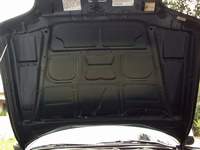
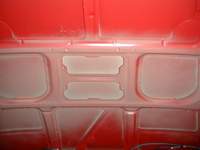
Using a drill bit of the appropriate size, now drill from the
underside
of the hood through the four holes in the factory support
used
to secure the studs to the hood. Drill very carefully.
The
hood is thin aluminum and the drill bit can bend the metal as it goes
through.
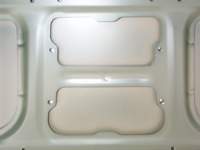
It may not be easy to see but this shot show you
what the hood will
look like from the top right after the holes are drilled.
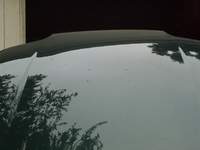
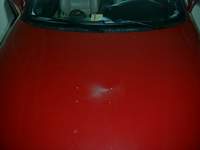
Now we are ready to make a template which will be
used to mark the are
we need to cut out of the hood.
Click on this picture to get a pre-made
template,
printing info labeled in this picture…
Temporarily assemble the two underside fasteners and plate with the
studs to the underside of the scope with the phillips screws. A little
soap on the screws will make them go into the unthreaded fiberglass easier
if they are really tight. (Make sure you get the screws in perfectly
as there are no second takes here if you make a mistake). I had my scoop painted prior to starting this project. In order
to protect it from getting scratched I used an old motherboard box with
padding on the bottom.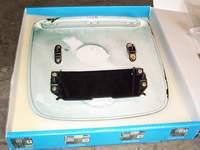
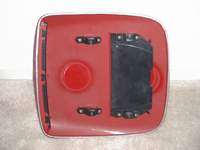
Now lay the cardboard template on top of the hood matching
up the
four holes to the four holes you have drilled.
Mark the outline of
the template on top of the hood with a thin marker or pencil.
I used some spare zip ties and a screwdriver to align the form with the
drilled holes.
Once the outline is done you should end up with a nicely scratched hood
like in this picture.
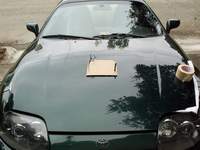
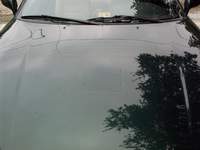
Time to do some cutting. Mask off the are around the area you have marked.
This will help
prevent any scratching of the hood paint while working.
I also kept washing the hood with water to prevent scratching.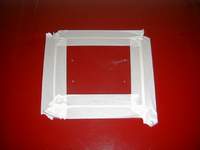
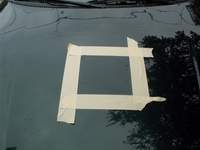
Once done cutting here is what you should see.
Using the sand paper, sand the edges of the hole so they are
smooth.
The hood is aluminum so it won’t rust. I didn’t bother
painting the edges
of the cut out. Clean the hood by spraying with a water hose.
Don’t do any wiping
or the metal particles from
cutting with scratch the paint. Remove
the tape.
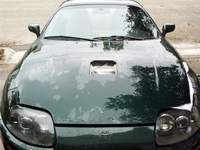
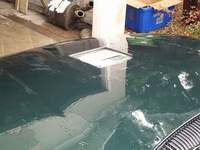
While the hood is drying lets cut a hole in the heat shield.
Here are some pics of the stock heatshield.
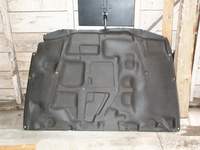
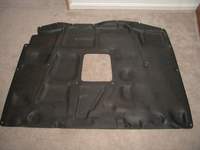
Now we put the whole thing back together.
Install the metal mesh into the scoop. Install the underside
studs and the plate with the studs to the underside of the scoop if they
aren’t already on. Then fit it on the hood.
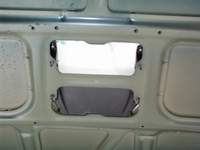
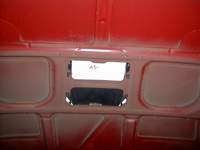
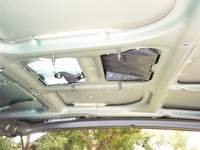
At this point I just put the nuts on to hold the
scoop in place while
I reinstalled the heat shiled.
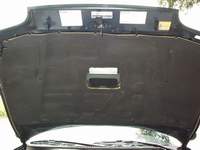
Almost there. When installing the heat shield don’t
reinstall the center plastic fastners as they will need to also hold the
metal air guide.Before installing the hood scoop permanently decide if you want to use
the factory gasket or not on it. I used the factory gasket. Ron
didn’t. Instead of using the factory gasket and foam strips for the
underside of the scoop, I cut some thin strips of duct tape to serve as a
gasket. I don’t think the factory gasket will look good once
installed. It doesn’t wrap completely around the edge of the scoop
and it curves up and out so it will be seen when finished. Just make some
thin strips of tape and keep them slightly in from the edge. When
mounted, the scoop will lay very flush but the tape provides a little
cushion and seal that can’t be seen. I think the choice here depends
on the color of your car.
Insert the two factory fasteners in the middle of the air
guide. Holes are already there. Using a drill bit, punch small
holes through the four holes at the corners of the metal air guide through
the heat shield. Insert the plastic fasteners into all six holes of
the metal air guide. I had to slightly cut the new fasteners shorter
because there is little clearance between the frame of the hood and the
top of the hood.
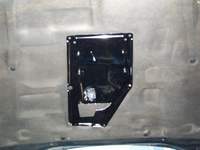
One of the additional difficulties I had to work around was
a front
strut bar which required some cutting of the metal air guide.
You should
be able to see where the cuts needed to be made
to clear the strut bar. I
used metal cutters to do the job.
Since the metal air guide material is
soft its easy to cut.
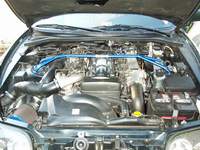
Notes: I sanded and painted the metal air guide before
installing.
Polishing/cleaning Foggy Supra Headlights
Foggy Supra Headlight Restoration
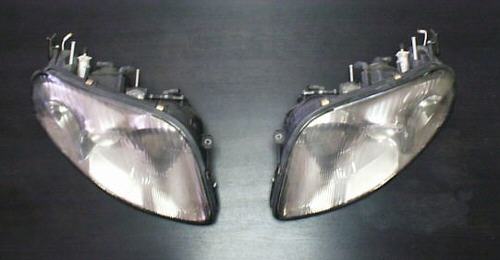
I’ve helped cleaning out many headlights for local supras down here in SoCal. The discoloration you see
is inside the headlights usally…in some cases outside only. The procedure
requires popping your lights into the oven for about 5 minutes at low temperature
(be careful or you will damage the light), then
removing the plastic casing. From there, you need to polish the plastic with a
good plastic polish and scratch remover. Using the right product is
important, you don’t want to be leaving scratches and nicks on the plastic
surface. Use a product such as Novus, Plexus, or Meguiar’s plastic
cleaner/conditioner. You will certainly want to use Novus, as it will leave the
final surface very clean and shiny. A high speed polisher will save you a
lot of time and effort. Although, it can be done by hand and some elbow
grease.You can also find these at
websites by doing a search for ‘novus plastic cleaner’ or ‘plexus plastic
cleaner.’
Silicone/RTV sealant: can be bought at local car parts stores for about
$3 in a small tube.Sand paper: use 2000Grit paper, and wetsand the outside of the headlights
using a soapy water solution. Your headlights will be crystal clear and
smooth. Also, follow up by buffing the sanded surface with the plastic
polish/cleaner.Oven Temperature: about 175-200F for about 5-10 mins, depending on the
actual temperature of the oven. Leave the headlights in there until they
are somewhat warm to the touch. Start at one end of the headlight, and use
a dull object such as a butter knife of dull screwdriver to separate the
headlights.
Heat the
headlights in the oven, pop ’em apart.
![View[1].jpg (90629 bytes)](http://www.mkiv.com/techarticles/headlights/View1_small.jpg)
![View[2].jpg (91869 bytes)](http://www.mkiv.com/techarticles/headlights/View2_small.jpg)
Take out the
screw, remove the shiny plastic piece.
![View[3].jpg (89452 bytes)](http://www.mkiv.com/techarticles/headlights/View3_small.jpg)
![View[4].jpg (92104 bytes)](http://www.mkiv.com/techarticles/headlights/View4_small.jpg)
All three
pieces need cleaning…
![View[5].jpg (90759 bytes)](http://www.mkiv.com/techarticles/headlights/View5_small.jpg)
PorterCable
7424, Novus, Plexus, and a Microfiber cloth. Indispensible tools.
![View[6].jpg (89684 bytes)](http://www.mkiv.com/techarticles/headlights/View6_small.jpg)
Spray Plexus to
clean the surface. Wipe off with microfiber.
![View[7].jpg (90496 bytes)](http://www.mkiv.com/techarticles/headlights/View7_small.jpg)
Apply Novus
heavy scratch remover.
![View[8].jpg (90466 bytes)](http://www.mkiv.com/techarticles/headlights/View8_small.jpg)
Buff out
scratches at about 4000rpm.
![View[9].jpg (91761 bytes)](http://www.mkiv.com/techarticles/headlights/View9_small.jpg)
Repeat for
outside surface.
Also, wetsand using 2000 grit sandpaper to leave a smooth finish.
![View[10].jpg (90972 bytes)](http://www.mkiv.com/techarticles/headlights/View10_small.jpg)
Spray plastic
with Plexus, wipe off.
![View[12].jpg (91257 bytes)](http://www.mkiv.com/techarticles/headlights/View12_small.jpg)
![View[13].jpg (89419 bytes)](http://www.mkiv.com/techarticles/headlights/View13_small.jpg)
![View[14].jpg (88713 bytes)](http://www.mkiv.com/techarticles/headlights/View14_small.jpg)
![View[15].jpg (89311 bytes)](http://www.mkiv.com/techarticles/headlights/View15_small.jpg)
The finished
result…clean headlights!
![View[16].jpg (91093 bytes)](http://www.mkiv.com/techarticles/headlights/View16_small.jpg)
![View[17].jpg (87232 bytes)](http://www.mkiv.com/techarticles/headlights/View17_small.jpg)
Once the cleaning is done, put
the cleaned two pieces back into
the oven to allow the existing rubber sealant to warm up.
Leave for about 2-3 minutes. Take them out, and apply the
silicone sealant to the two pieces. Put them back together (requires
a bit of force).
Optionally, you can add another bead of silicone sealant once the pieces have
been put back together.
![View[19].jpg (93565 bytes)](http://www.mkiv.com/techarticles/headlights/View19_small.jpg)
Here are the headlights after
they were done,
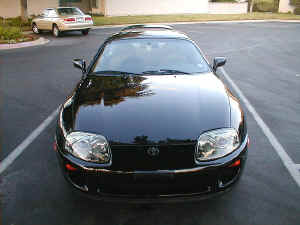
Comments/suggestions? Email
me
![]()
Indiglo gauge Install
1993-1998 Toyota Supra Indiglo Gauge
Install Procedures
By Larry Ma***More
Photos***I ordered my indiglo gauges from www.Procarparts.com.
This is the 5 color Indiglo gauges that are white in daylight. I’ve try to take
the best pic of each step to help all you other Supra owners who have bought
this kit. The install is fairly simple, just takes some time to make it nice and
neat. Here are the steps I took to install mine:Disclaimer:
These are the steps that I took to
install my Indiglo gauges. Depending on what kit you purchased, results or
install directions may vary. Please read this tech article thoroughly before
starting your install. As usual with any tech article: If you mess up, it’s not
my fault… So be careful.Note: Before you start installing the gauges, you might
want to hook it up to a 12v or 14v source to verify the gauges work before
installing. This will take care of lots of headache later if for a reason they
are not in working order.
Things
needed:
Phillips screwdriver (magnetic tip
preferred)Double-sided tape
Electrical tape/wire
splicersSmall Clippers
1. Disconnect Negative cable to battery, Unscrew Shift-knob from
shifter and remove ashtray from center console.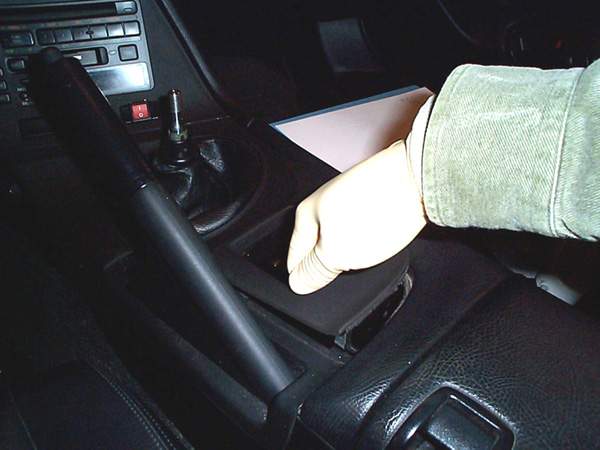
Remove Center Console piece (just pull up as in picture), and
disconnect 2 plugs attached to center panel:
Unscrew 5 Phillips screws from the top instrument panel, pull off
and disconnect 3 plugs from back of panel:
Unscrew screw near top of center console panel (do not drop screw):
And pop off center console and disconnect plugs from back of
panel:
Snap off and remove center gauge panel:
Unscrew screw located top-left on Left dash panel, pull off and
unplug 2 plugs:
Unscrew 4 screws from gauge cluster:
Unplug 3 plugs from back of gauge cluster and remove, this is what
it should look like afterwards:
Unsnap all surrounding clips on clear gauge guards and remove clear
cover (be very very careful not to crack the clear guard):
Unsnap all surrounding snaps to black gauge cluster panel and remove
(again, be very careful not to crack it):
Now you should have just the gauge and needles exposed. Slide the
Gauge faces over the needles, DO NOT remove the
needles or else you will have a heck of a time calibrating it later. I put
double-sided tape under the gauge faces to stick to the stock faces, this
way I could still go back to stock if I choose to later.
Cut the slits on top left of the cluster enclosure for the wire
connectors to run through:
Run Wire connectors from gauge faces through the hole you just
created in step 12 (kind of a back picture, but you could get the idea of
where the wires are coming out of the little hole:
Snap Black Cluster piece back on. This is what it should look like
(be careful not to crack it):
Snap Clear Gauge guard piece back on (be careful not to crack
it):
Use small zip-tie to make the wires shorter and neater:
Put some strong double-sided foam tape on bottom of transformer and
mount between bottom of dashcover and air-vent pipe (this will secure the
transformer in place):
Run Switch wire down by ignition (you could run it anywhere you
want, but I find it more convenient by the ignition), and run the
power/ground wire to center dash (this will tap into power of cigarette
lighter light:
Connect positive (red) of power to “green/yellow” wire and Ground
(black) to “green/white” wire of cigarette lighter light plug. These are
the colors for my ’94 TT, others might be different.(See pic on step 18).
Note: Do NOT tap power for transformer into the stereo
illumination wire, it may induce unwanted high pitch noise from
transformer.
Connect the 3 gauge cluster plugs to the transformer:
The hard part is complete,now test it to make sure it works before
installing all the panels. You’ll have to plug the dimmer switch in and
turn on your lights, it should light up and you’ll be able to change
colors with the switch. This is what mine looked like:
Now Mount the switch on the side of the steering column or wherever
you prefer and install all the panels in reverse order:
Here is a pic of where my switch is mounted with all the panels back
in place:
Here is a pic of the switch lit:
Pics:
OFF:
ON:
THE END!
E-mail me if there are any questions at:
mailto:larryma@larryma.com?Subject=Indiglo
Gauge Install


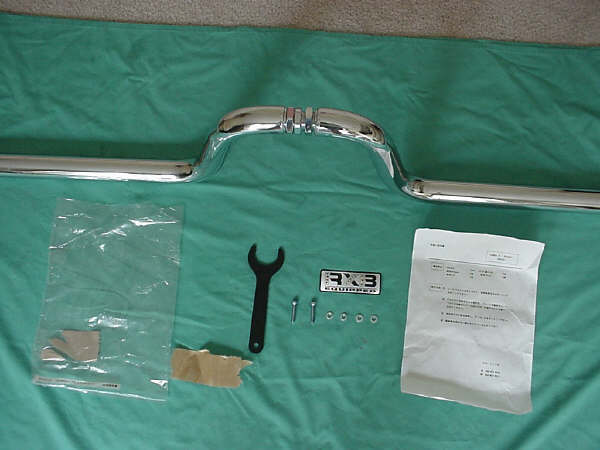
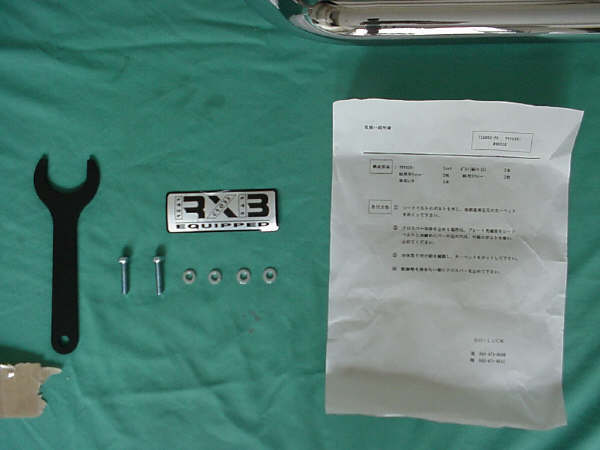
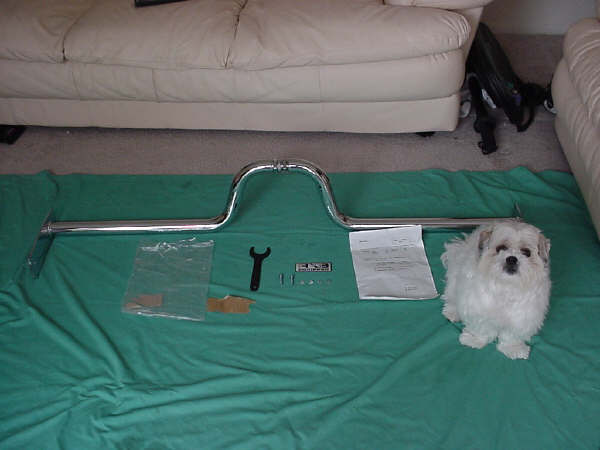



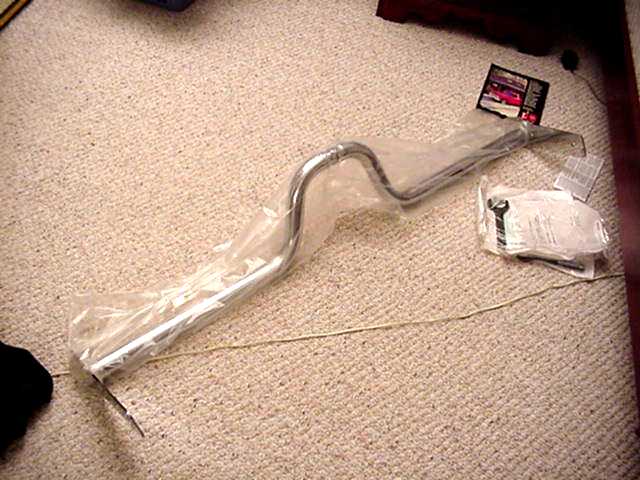
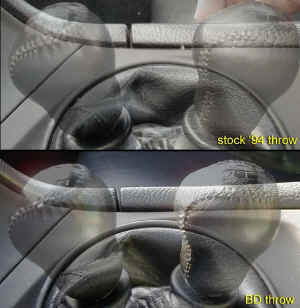
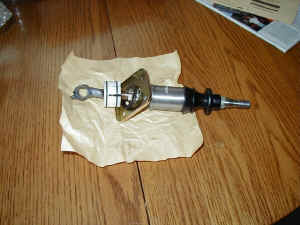
![shifter[1].jpg (68310 bytes)](http://www.mkiv.com/techarticles/bd_shifter/shifter1_small.jpg)

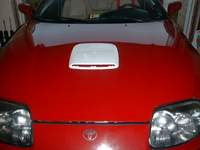
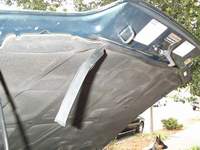
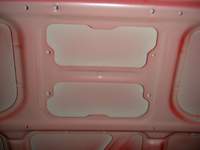
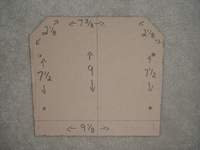
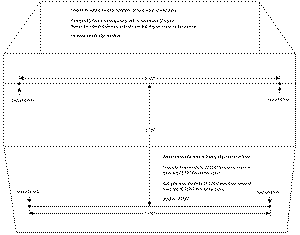
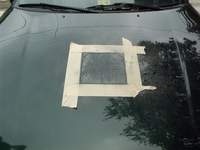
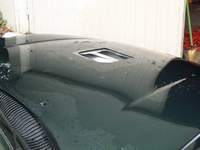
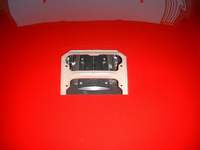
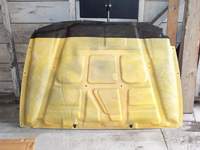
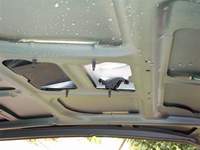
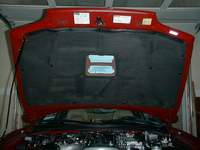
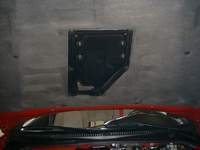
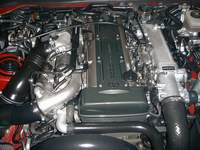
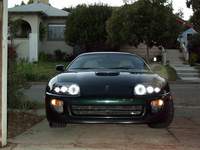

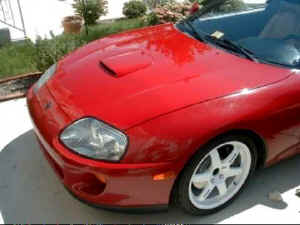
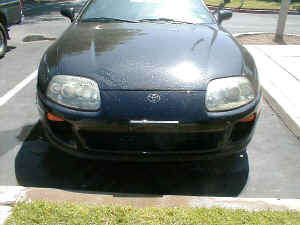
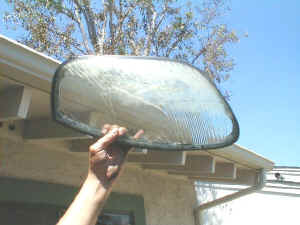
![View[18].jpg (90479 bytes)](http://www.mkiv.com/techarticles/headlights/View18_small.jpg)
